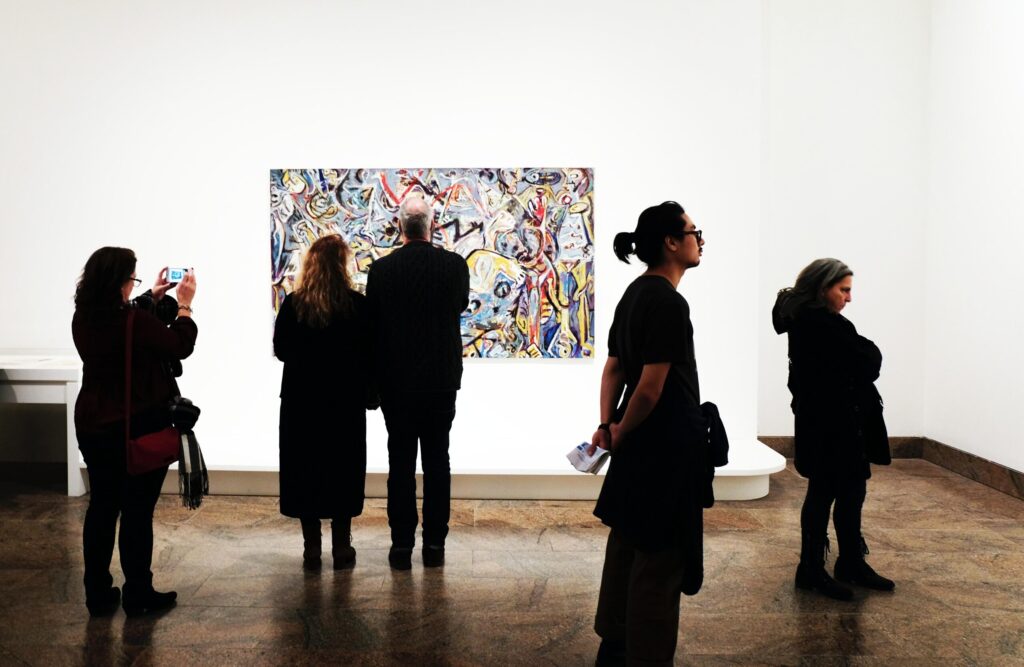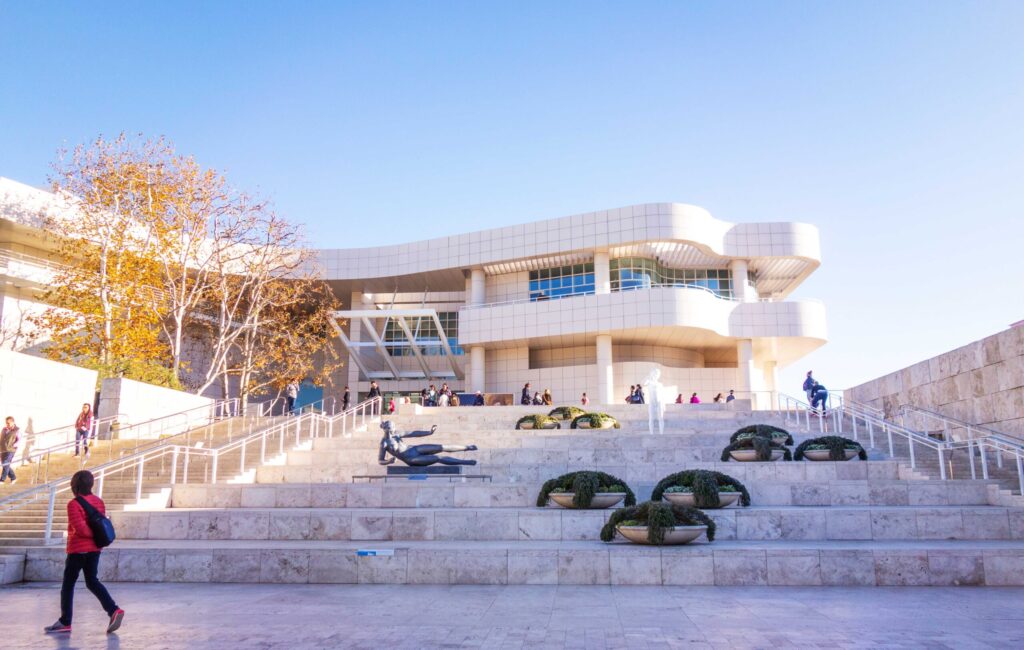
Art lovers rejoice! The ultimate museum bucket list for your cultural cravings (and Instagram feed)
Attention all art lovers and culture connoisseurs! Are you ready to embark exploring some of the most famous art museums in the world? From the Louvre in Paris to the Guggenheim in New York, get ready to put these on your bucket list– spying some of the most iconic masterpieces in human history.
Whether you’re an art history buff or just looking for a fun day out, these museums offer a step back in time. So grab your headphones and get ready to immerse yourself in the beauty of art!
Here are some of the best art museums in the world, in no particular order:
- The Louvre Museum, Paris, France: The Louvre is one of the world’s largest and most famous art museums, with a collection of over 38,000 objects spanning thousands of years. It is particularly renowned for its collection of European paintings, including Leonardo da Vinci’s Mona Lisa.
- The Metropolitan Museum of Art, New York City, USA: The Met is one of the largest art museums in the world, with over two million works of art from around the globe. Its collection spans 5,000 years of world culture, from ancient Egypt to modern art.
- The British Museum, London, UK: The British Museum is one of the world’s oldest and most comprehensive museums, with a collection of over eight million objects. It is particularly renowned for its ancient Egyptian artifacts and the Rosetta Stone collection.
- The Vatican Museums, Vatican City: The Vatican Museums contain some of the world’s most significant and valuable art collections, including works by Michelangelo and Raphael. It is also home to the Sistine Chapel, one of the most famous painted ceilings in the world.
- The Prado Museum, Madrid, Spain: The Prado Museum is one of the most important art museums in Spain, with a collection of over 20,000 works of art. It is particularly renowned for its collection of Spanish art, including works by Francisco de Goya and Diego Velázquez.
- The Uffizi Gallery, Florence, Italy: The Uffizi Gallery is home to one of the most significant collections of Italian Renaissance art in the world, including works by Botticelli, Leonardo da Vinci, and Michelangelo.
- The National Museum of China, Beijing, China: The National Museum of China is the largest in China, with over one million objects spanning China’s history from prehistoric times to the present day.
- The Getty Museum, Los Angeles, USA: Another notable art museum that is worth mentioning, is The J. Paul Getty Museum, located in Los Angeles, California, is renowned for its extensive collection of European art, including paintings, drawings, sculptures, and decorative arts from the Middle Ages to the present day. The museum’s collection includes works by artists like Rembrandt, Van Gogh, and Monet.
- The Art Institute of Chicago, USA: The Art Institute of Chicago is one of the oldest and most prestigious art museums in the United States, with a collection of over 300,000 works of art from around the world. It is particularly renowned for its collection of Impressionist and Post-Impressionist paintings.
- The Rijksmuseum, Amsterdam, Netherlands: The Rijksmuseum is the largest art museum in the Netherlands, with over one million objects. It is particularly renowned for its collection of Dutch Golden Age paintings, including works by Rembrandt and Vermeer.
- The National Gallery, London, UK: The National Gallery is one of the most important art museums in the world, with a collection of over 2,300 paintings dating from the 13th to the 19th century. It is particularly renowned for its collection of European masterpieces, including works by Botticelli, Leonardo da Vinci, and Van Gogh.
- The Hermitage Museum, St. Petersburg, Russia: The Hermitage Museum is one of the world’s largest and most important art museums, with a collection of over three million objects. It is particularly renowned for its collection of Western European art, including works by Rembrandt, Rubens, and Van Dyck.
- The National Museum of Anthropology, Mexico City, Mexico: This museum is dedicated to the history and culture of Mexico, with a collection of artifacts from pre-Columbian Mesoamerica. It is particularly renowned for its collection of Aztec and Mayan artifacts.
- The Tate Modern, London, UK: The Tate Modern is one of the world’s most visited modern art museums, with a collection of contemporary art from around the globe. It is housed in a converted power station and features work by artists such as Picasso, Rothko, and Warhol.
- The Musée d’Orsay, Paris, France: The Musée d’Orsay is home to one of the world’s most significant art museums with collections of Impressionist and Post-Impressionist art. It is located in a former railway station, and features works by artists such as Monet, Renoir, and Van Gogh.
- The Guggenheim Museum, New York City, USA: The Guggenheim Museum is one of the most famous art museums in the world, with a collection of modern and contemporary art. It is renowned for its unique cylindrical design by Frank Lloyd Wright.
TIP: These museums are highly regarded for their collections, unique architecture, and knowledgeable staff. They offer visitors a chance to explore and appreciate the diversity of human creativity and expression throughout history.
Did you know?
The Getty Museum is that its founder, J. Paul Getty, was an American industrialist and philanthropist once considered the wealthiest man in the world. He had a passion for art and began collecting it in the 1930s, eventually amassing one of the world’s largest private art collections.
Getty established the J. Paul Getty Trust in 1953, which funds and operates the Getty Museum and several other art and cultural institutions in Los Angeles.
Getty was known for being frugal in his personal life, famously saying, “The meek shall inherit the earth, but not its mineral rights.”

The concept of museums dates back to ancient civilizations such as Egypt, Greece, and Rome, where collections of art and artifacts were displayed in temples, public buildings, and private homes.
AG Commentary: Our team sat around asking each other, if we’re collecting their items, what were they collecting so long ago that was “ancient?”
However, the first known public museum was established in Alexandria, Egypt, in the 3rd century BC by Ptolemy I Soter. This museum, known as the Museum of Alexandria or the Alexandrian Museum, was a center of learning that housed a collection of artifacts, scientific instruments, and works of art.
In the Middle Ages, the church and nobility were the primary collectors of art and artifacts used for religious and ceremonial purposes. With the rise of the Renaissance in Europe, there was a renewed interest in classical art and culture, and private collectors began amassing collections of ancient Greek and Roman artifacts.
During the 1700-1800s, as European powers expanded their empires and engaged in trade with other parts of the world, there was a growing interest in exotic cultures and art. This led to establishment of ethnographic and natural history museums, such as the British Museum in London and the Smithsonian Institution in Washington, D.C.

Modern art museums as we know it today, focusing on education and public access, emerged in the late 1800s and early 20th century. One of the first museums to adopt this new approach was the Louvre in Paris, which was transformed from a royal palace into a public museum in 1793 during the French Revolution.
Art collecting has been practiced for thousands of years, with ancient civilizations such as Egypt, Greece, and Rome amassing collections of art and artifacts.
During the Renaissance, outside of art museums, art collecting became more widespread, and wealthy individuals and nobility began commissioning art, amassing antiquities and classical art collections. This trend continued into the modern era, with private collectors and museums playing a critical role in preserving and disseminating art and cultural heritage.


